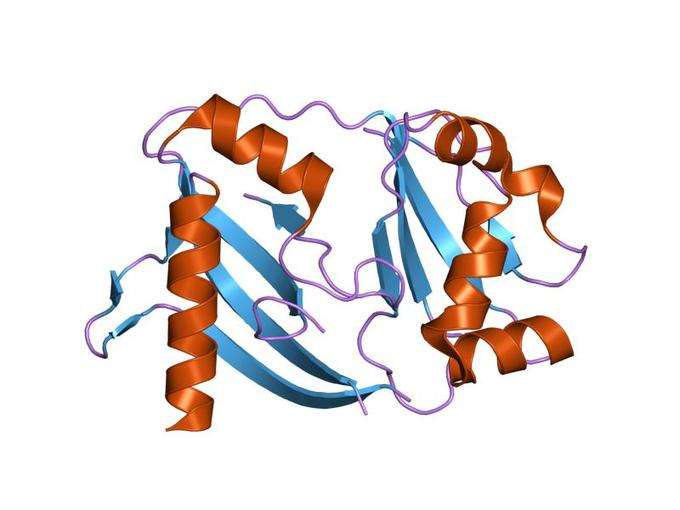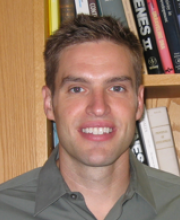Fighting HIV with Stem Cells and Cutting-edge Genetics
 “Berlin Patient” Timothy Brown was cured of HIV after he received stem cells from a patient naturally immune to the disease. His story inspired two companies to try and recreate that natural immunity in HIV patients using stem cells and two (then-new) gene-editing techniques.
“Berlin Patient” Timothy Brown was cured of HIV after he received stem cells from a patient naturally immune to the disease. His story inspired two companies to try and recreate that natural immunity in HIV patients using stem cells and two (then-new) gene-editing techniques.
The approach has proven so popular that long before conclusive clinical trial results are due in, a third team has entered the fray: Harvard University. Harvard is using stem cells and the hottest gene-editing newcomer of all: CRISPR/Cas9.
Researchers behind all three approaches are highly confident in their respective approaches, they told Bioscience Technology this week. The clear impression each left: few stones will remain unturned in the high-tech quest to replicate the simple— if stunning— success of the Berlin Patient.
The ‘Berlin Patient’
In 2007, HIV patient Timothy Brown received a blood stem cell transplant to treat his co-morbidity: a leukemia. His doctor, the University of Berlin’s Gero Huetter, knew that some individuals are immune to HIV by virtue of a genetic mutation in the CCR5 gene that controls a receptor, on the surface of CD4 T cells, by which HIV enters. When both copies of the CCR5 gene are naturally disabled, HIV cannot enter.
Huetter searched databases until he found cells that were an immunologic match for Brown’s— and possessed that dual mutation. Shortly after receiving the cells, Brown was free of detectable viral load.
He has been HIV-free ever since.
Sangamo
Sangamo was the first company to try to replicate that success with technology. Among other things, the company launched a clinical trial in 2009, led by the University of Pennsylvania’s Carl June, which involved removing HIV patients’ CD4 T cells. The team then disabled both CCR5 gene alleles with the latest gene editing technology at the time, Zinc finger nucleases (ZFNs). The cells were returned to the patients.
The first report on that trial, published in the New England Journal of Medicine this March, found the approach to be safe. The edited T cells were well tolerated. It was a Phase 1 trial not designed to calculate efficacy, but it was noted there was a decline in HIV levels in several patients who were taken off other therapies. In those patients, the modified cells seemed to possess a survival advantage.
One patient even achieved undetectable viral loads. That patient, it was later discovered, naturally possessed one mutated CCR5 gene allele. “Successful clinical application will most likely depend on bi-allelic knockout,” the report said.
The modified cells possessed a mean half-life in the vascular compartment of 48 weeks. This was natural, since T cells are not permanent residents of the body.
Calimmune
But hematopoietic (blood) stem cells (HSCs) are permanent residents. Calimmune, led by California Technology Institute Nobel Prize Winner David Baltimore and UCLA AIDS Institute Director Irvin Chen, decided to take advantage of that fact.
In 2013, the team launched a clinical trial in which HIV patients were given back both their own T cells, and longer-lived HSCs, both with the CCR5 gene disabled using hairpin RNAs delivered by a lentivirus. The idea: to provide patients with permanent factories of cells immune to HIV, as HSCs pump out all the cells of the immune system over the course of a life.
That group made a “half-time” announcement in early August noting that their cells, too, appear to be safe.
 Harvard
Harvard
Harvard jumped in this week with a Cell Stem Cell cover paper. In that paper, Harvard stem cell researchers Chad Cowan and Derek Rossi reported that altering CCR5 in stem cells using the very popular CRISPR/Cas technology— in mice— was highly efficient. Since there have been published reports of off-target effects, the team conducted an average of 3,400 sequencing passes, compared with the 50 usually done in whole-genome sequencing, to identify off-target genome sites. Off-target effects “were vanishingly small,” Cowan told Bioscience Technology.
Talking to the researchers: differences in outcomes
It is still early days, but researchers with all three groups pointed out a few differences between them. Calimmune's Baltimore noted that “the Harvard paper is a very obvious extension of technology already in use by Sangamo. [But Harvard’s] CRISPR is easier and more efficient. Sangamo used older Zinc finger technology. Either method is conceptually similar to what we are doing with vectors.”
June --who is, again, working with Sangamo's ZFNs--told Bioscience Technology that “it looks like [Harvard's] CRISPR is more efficient than ZFN in CD34 HSC. However, the rates of [gene] disruption in CD4 cells look quite a bit lower than what we routinely achieve with ZFNs (often 50 percent) in CD4 cells.” June said his 50 percent figure comes from in vitro manufacturing data and “our other preclinical papers.”
June added he was unsure if the difference in disruption rate was due to “difference in cell lineage or in technique.”
Cowan noted that in the human NEJM data, “Carl June and colleagues reported they identified mutations in 11 to 28 percent of CD4 T cells, and they did not find any homozygous null mutations (T cells that had both copies of the gene deleted).” He told Bioscience Technology that his group by contrast— in mice— “report on average 30 percent homozygous gene deletion, and over 50 percent of cells carrying mutations in the gene.”
He added: “According to our results, it does appear less [effective] to perform genome editing in T cells as compared to cultured human cell lines, or even HSCs.”
Cowan also contended that, while “Calimmune's approach seems very encouraging,” it has “one major drawback compared to our study.”
“As they deliver the hairpin via lentiviral vectors, it means that every cell has at least one unwanted mutation (the viral integration site which is random, and has previously been found to cause cancer in early gene therapy trials),” he said. Lentiviral vectors integrate into the genome. "As [Calimmune] often transplants 10 million (or more) cells into patients, it means these cells have 10 million mutations. Our approach had a vanishingly small off-target mutation rate, not measurable for most guide RNAs used, and a frequency of 36 out of 5,963 for the one guide which had any off-target mutations.”
Baltimore disagreed. "Unless they sequenced the entire genome of many clones, they cannot know the mutation rate.” He added that “‘vanishingly small’ is not zero. [And] there is wide experience with lenti-vectors, and no cancer-inducing mutations due to integration sites.”
Baltimore concluded: “The efficiency of the process should not be the determining factor because the virus should act as a selective force to select for protected CD4 cells. I am not sure which is the most efficient system.”
Harvard may apply for FDA clinical trial approval in five years.





